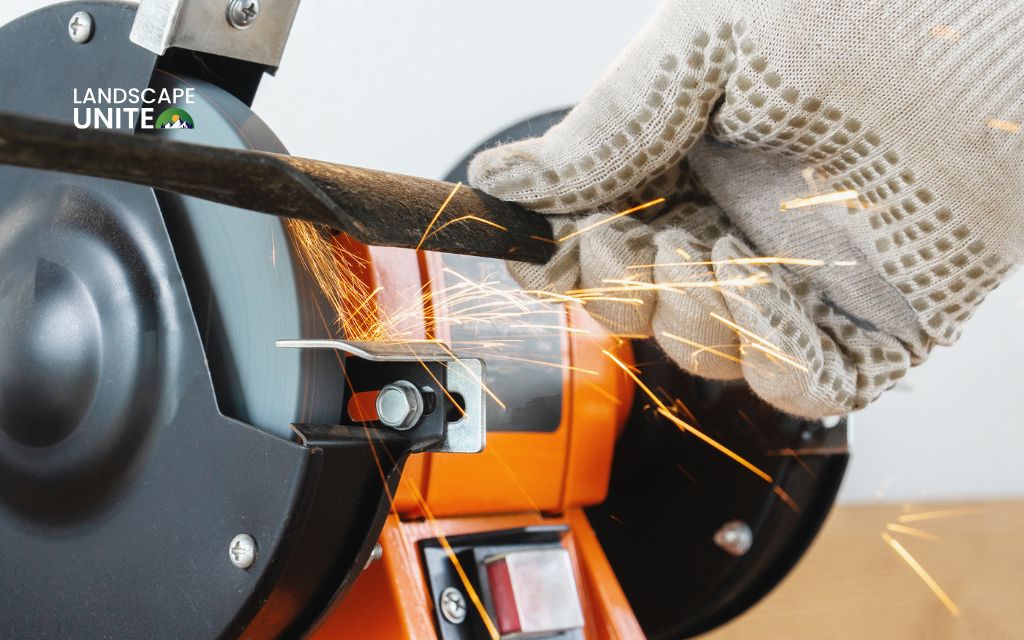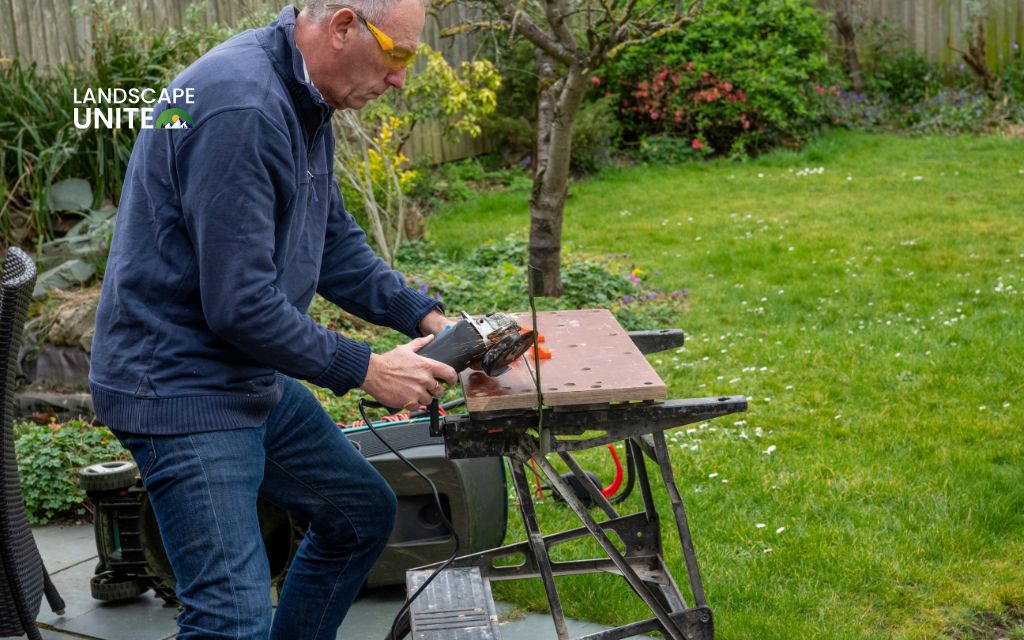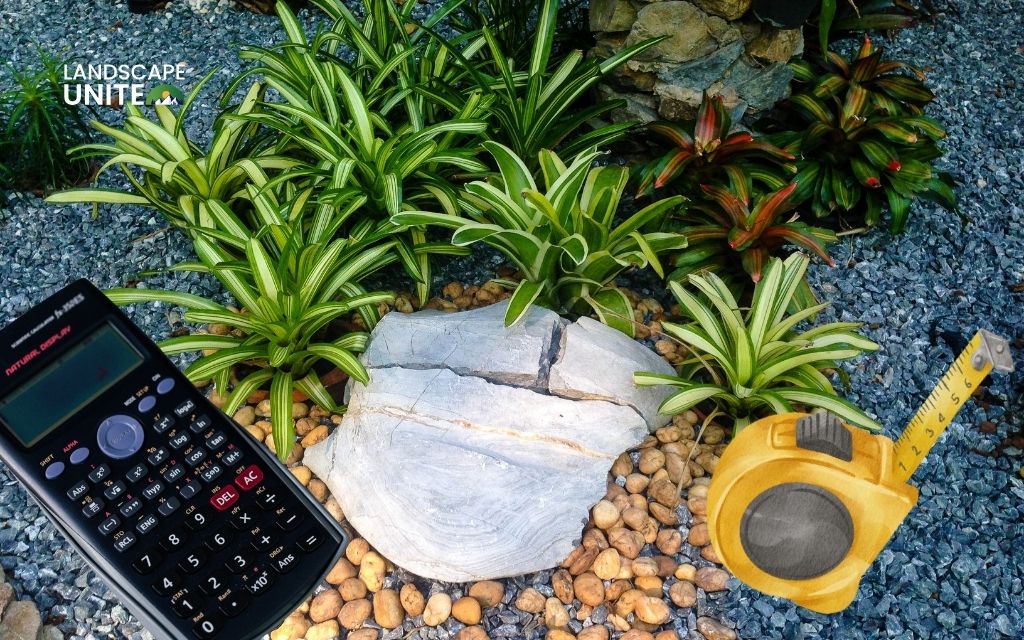The question of how sharp should lawn mower blades be required understanding the delicate balance between cutting efficiency and practical safety.
Many homeowners make the mistake of over-sharpening their blades, creating razor-like edges that chip easily and pose unnecessary risks.
A properly sharpened mower blade transforms your cutting experience, delivering clean cuts that promote grass health while protecting your equipment investment.
Read on to discover the exact sharpness standards used by lawn care professionals and learn how to achieve perfect blade performance every time you mow.
How sharp should lawn mower blades be?
Your blade should be sharp enough to slice through grass cleanly – think of a butter knife cutting through soft butter rather than a razor blade slicing paper.
Avoid making your blades razor-sharp, as overly sharp edges create multiple problems. They chip easily when encountering rocks, sticks, or other debris, dull much faster than properly sharpened blades, and pose unnecessary safety risks during handling and maintenance.
The optimal cutting angle for most lawn mower blades is a 30°–40° bevel angle. This angle provides the best balance of cutting performance and blade longevity. Most manufacturers design their blades with this angle, so maintaining it during sharpening ensures optimal performance.

How to check if your blade is sharp enough?
Use these simple tests to determine if your mower blade needs sharpening:
- Grass tip inspection: After mowing, check grass tips—clean, uniform cuts indicate sharp blades, while brown or frayed tips mean the blade is dull
- Light reflection test: Hold the blade edge toward light—sharp edges won’t reflect light, but dull edges will show visible reflection
- Touch test: The blade should feel sharp like a butter knife but not sharp enough to easily cut skin with light pressure
- Performance check: If you need multiple passes over the same area or the mower vibrates excessively, your blade likely needs sharpening
- Engine strain signs: Unusual engine struggling or increased noise during normal cutting indicates a dull blade
Why is blade sharpness important?
Proper blade sharpness directly impacts your lawn’s health, appearance, and your mower’s performance:
- Clean cuts promote lawn health: Sharp blades slice grass stems cleanly, creating smooth surfaces that heal quickly and resist disease, pests, and environmental stress
- Prevents grass damage: Dull blades tear and shred grass instead of cutting, leaving ragged edges that turn brown within hours and make your lawn look unhealthy
- Reduces engine strain: Sharp blades require less power to cut through grass, improving fuel efficiency and extending engine life
- Saves time and effort: Clean cuts eliminate the need for multiple passes over the same area
- Quieter operation: Less engine strain means quieter mowing sessions
How to sharpen and maintain blade sharpness?
How often do you sharpen blades?
Plan to sharpen your lawn mower blade after every 20–25 hours of use, which typically translates to at least once per mowing season for most homeowners.
Heavy-use situations, such as commercial landscaping or properties with particularly tough grass types, may require more frequent sharpening.
Keep track of your mowing hours by noting start and end times, or consider installing an hour meter on your mower for accurate monitoring. This proactive approach prevents blade deterioration from progressing to the point where it damages your lawn or strains your equipment.

Tools & technique
Essential tools and proper technique for effective blade sharpening:
- Sharpening tools: Use a metal file, sharpening stone, or fine bench grinder for best results
- Maintain original angle: Keep the factory bevel angle of approximately 30° during sharpening
- Work gradually: Remove only enough material to restore sharpness – avoid aggressive grinding that shortens blade life
- Even strokes: File or grind in smooth, consistent movements from blade center toward the tip
- Count your strokes: Use the same number of strokes on both blade ends to maintain symmetry and balance
- Check progress frequently: Test sharpness regularly to avoid over-sharpening
Balancing the blade
After sharpening, balance the blade by hanging it on a nail through the center mounting hole. A properly balanced blade will hang horizontally, while an unbalanced blade will tip toward the heavier side.
If the blade tips, file additional material from the heavier end until it hangs level. Proper balance prevents vibration, reduces wear on mower components, and ensures even cutting across the mowing width.
Never ignore blade balance, as unbalanced blades can cause serious mechanical problems including bearing failure, crankshaft damage, and excessive vibration that makes the mower uncomfortable and potentially unsafe to operate.
Safety recommendations
- Always disconnect the spark plug wire or remove the battery before removing the blade to prevent accidental engine starting during maintenance. This simple step prevents serious injury from unexpected blade movement.
- Wear heavy work gloves and safety glasses while handling and sharpening the blade. Lawn mower blades are heavy, awkward to handle, and maintain sharp edges that can cause serious cuts if mishandled.
- Use proper lifting techniques when removing and installing blades, as they typically weigh several pounds and can cause back injury if handled improperly. Consider using a blade removal tool to simplify the process and improve safety.
When to replace instead of sharpen?
Replace your lawn mower blade immediately if you notice any of these conditions:
- Cracks or chips: Any visible cracks, even small ones, pose safety risks and can lead to blade failure during operation
- Significant bends or warping: Bent blades cannot be straightened safely and will cause vibration and uneven cutting
- Excessive rust or corrosion: Deep rust that compromises blade thickness and structural integrity
- Worn mounting hole: Elongated or damaged center hole that affects blade attachment and balance
- Frequent sharpening needs: If the blade requires sharpening more often than every 20-25 hours of use
- Damaged sail section: The raised portion behind the cutting edge is cracked, worn, or broken off

Conclusion
Effective lawn mower blade maintenance focuses on achieving the right edge rather than the sharpest possible edge.
Maintain a butter-knife-level sharpness using a 30°–40° bevel angle, sharpen after every 20–25 hours of use or at least once per season, and keep blades properly balanced for optimal performance.
By following these guidelines, you’ll maintain professional-quality cutting performance while protecting your investment in lawn care equipment.
For more expert insights on lawn mower maintenance, explore our gardening expertise center. You’ll discover detailed guides covering everything from soil preparation to advanced landscaping techniques, helping you achieve best results in every aspect.
Frequently asked questions (FAQs)
Can mower blades be too sharp?
Yes. Over-sharpened blades dull faster, chip easily when hitting debris, and pose unnecessary safety risks during handling. Maintain butter-knife sharpness rather than razor sharpness for optimal performance and safety.
How often should I sharpen my mower blade?
Sharpen your blade every 20–25 hours of use, or at least once per mowing season. Commercial users or those mowing particularly tough conditions may need more frequent sharpening.
What angle should I sharpen the blade?
Maintain the original factory bevel angle, typically around 30°- 40°. This angle provides the best balance of cutting performance and blade durability for most lawn conditions.
How do I know if the blade needs replacing?
Replace the blade if you find cracks, chips, significant bends, excessive rust, or if it requires sharpening more frequently than recommended. These issues indicate structural compromise that sharpening cannot correct.


